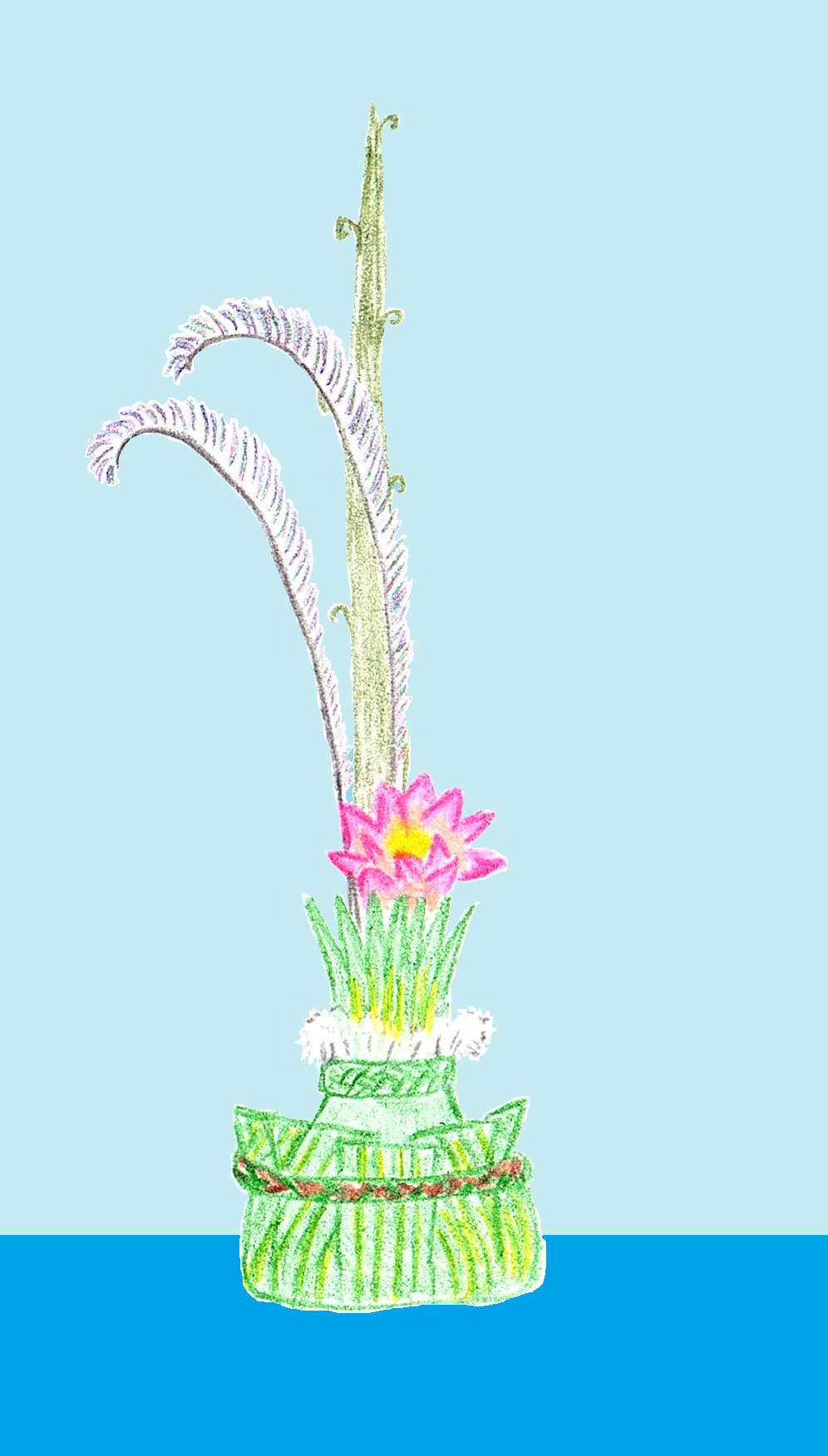leaf plate
Plate trees are one of the Cluster Islands' most ubiquitous natural resources, with orchards cultivated on all the islands. Although all parts of the plant are used, its most significant product is its enormous leaves, which can grow to be taller and wider than a human adult. Varieties of the tree are grown for the different thicknesses of their leaves. Smaller, thinner leaves are used as wrapping material. The thickest are cut into serving platters. The domesticated trees are grown in sheltered areas, where they are protected from strong winds that can damage the leaves and render them useless.
History & Usage
History
Leaf plate has been used since antiquity in braiding and weaving. The first sails were made of leaf plates sewn together. It is not very durable for heavily-used items, however, and today other fibers, both natural and synthetic, have mostly replaced leaf plate in goods such as furniture and basketry.
Everyday use
The most common application of leaf plate is in the cooking and presentation of food. Plates are folded or sewn to form sized containers for short-term storage of ingredients, and cut into squares to eat off of. Some meals are cooked by tying portions in a wrapping of thin leaf plate and dropping them into boiling water. This allows many different kinds of food to be cooked in the same pot, and also imparts a sweetish flavor to the food.
Cultural Significance and Usage
Leaf plate is an essential component in the Galternene practice of creating visual displays called "speaking the heart". Plates are cut into small sections or strips and shaped into the elaborate vases that hold the feathers and plant materials that make up the display.
Byproducts & Sideproducts
Plate trees also produce a starchy fruit that is used as a thickening agent in cooking. Some varieties are sweeter and can be eaten raw, or used to flavor desserts. The bark of the tree is processed into heavy-duty paper, and the softer pith fibers are used for making cloth.
Reusability & Recycling
Depending on the sturdiness of the leaf and the use to which it is put, a plate can be used repeatedly. When used in food service, plates can be rinsed and reused a limited number of times, after which they are only suitable for a final use as cooking envelopes. Thinner leaves used for wrapping tend to disintegrate after one or two uses, but can be converted to shreds suitable for padding fragile shipments. At the end of their useful life, plate remnants are collected along with other organic waste and sent to soil farms.
Type
Organic
Taste
inedible raw or cooked; sweetens food in cooking by contact
Color
dark green
Remove these ads. Join the Worldbuilders Guild



Comments